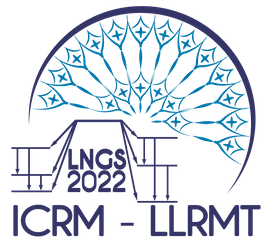Speaker
Description
ABSTRACT
Free release and/or controlled reuse of lead originating from controlled areas of the SCK•CEN requires, amongst other tests, low-level radioactivity measurements of these materials. For that purpose, the lead is collected, characterized for its radioactivity content and segregated in batches with similar destination. Each batch is than melted and poured into ingots. From each batch, several approximately 0.5 cm-thick, cylindrical shaped samples (pucks) with a diameter of 5 cm are also produced during the melting campaign. These pucks are analyzed by high-resolution gamma-ray spectrometry to verify that the limits described in Belgian law for the protection of the public (ARBIS art. 35, 2001) are not exceeded. One or more of the following radionuclides: 60Co, 54Mn, 134Cs, 137Cs, 154Eu and 110mAg had to be checked in the lead pucks following the origin of the lead.
The high density (11.3 g/cm³) of the sample is a challenge for the analyses by high-resolution gamma-ray spectrometry. Moreover, to keep detection limits as low as possible, these samples were measured in close contact with the detector, a configuration that increase the repeatability dispersion and by consequence also the total uncertainty. Experimental calibrations are not readily set up for this high density material samples, since reference sources are generally not available in this configuration. Hence, efficiency transfer with EFFTRAN, referencing regular standard sources available in our laboratory was used to set up calibrations. Since the different pucks have slightly varying heights, sample specific calibrations are computed accounting for the actual height of the sample. Since our routine analyses were only validated for low-density materials (0-3 g/cm³), additional validation was required to prove that the method based on efficiency transfer with EFFTRAN is fit for purpose.
For the validation study, we used thin circular paper reference sources containing 60Co and 137Cs and a set of 5 1 mm lead disks. A paper source was successively measured on top of different piles of lead disks (ranging from 1 to 5 mm), to compose different source configurations representing attenuation as in the actual sample. With these source configurations, we verified efficiency transfer by EFFTRAN with a non-attenuating reference source on top of the end cap for several HPGe detectors. The uncertainty of the reference source in combination with the high correction for self-shielding of the source resulted in a total combined uncertainty of 10 % at coverage factor k = 1 for gamma-ray energies above 600 keV. This uncertainty was considered fit for purpose, for the moment 300 pucks have been analyzed so far. Meanwhile we also measured the EURM 800 and EURM 801 stainless steel disks containing a certified value for the massic activity of 60Co produced by JRC Geel with a zeta score below 2.

